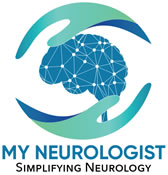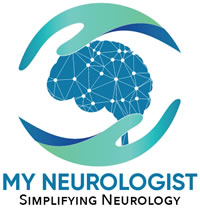AION is a particular type of ischemic stroke (stroke caused by blockage of a blood vessel) affecting the optic nerve. Optic nerve is the nerve taking images or messages from an eye to the brain. This nerve starts at the back end of each eye. It gets its blood supply for oxygen and nutrition mainly in two different ways: an artery in the center called central retinal artery, and the surrounding small arteries. The area of the nerve where it starts is especially important. It is supplied by many tiny blood vessels, and is particularly susceptible to stroke. Many people are born with a condition that put them at risk for a deficient blood supply at this location of the nerve. AION is caused by blockage of these small blood vessels, resulting in a partial stroke of the nerve. There is another similar condition called posterior ischemic optic neuropathy (PION), which is caused by a similar problem in small blood vessels supplying the part of the nerve away from its origin.
What are the risk factors for AION (and PION)?
- . Congenital reasons, as described above
- . Old age
- . Female gender
- . Caucasian race
- . High blood pressure
- . Diabetes mellitus
- . Cholesterol abnormalities
- . Smoking
- . Obstructive sleep apnea
- . Anemia
- . Migraine
- . Cardiac surgery
- . Cataract surgery
- . Spine surgery
- . Long duration of anesthesia
- . Low blood pressure, especially from blood loss
- . Hypercoagulapathies (condition making blood to clot)
- . Hyperhomocyesteinemia
- . Any condition increasing viscosity of blood, such as sickle cell disease
- . Carotid stenosis
- . Systemic lupus
- . Syphilis
- . Radiation exposure
- . Atherosclerosis, such as carotid disease or coronary artery disease
- . Immunization reaction
- . Viral infection
- . Certain medicines, such as sildenafil (Viagra)
What age group is affected by AION?
Risk of AION is similar to the risk of stroke. It mostly affects older population, older than 50.
What are different causes of AION?
One way to answer this question is that there are two main causes of AION: stroke and inflammation of blood vessels. Describing in details, one can list number of causes leading to stroke (such as high blood pressure, etc.), and similarly many other causes leading to inflammation (such as Giant cell arteritis, etc.).
In every case of AION, it is important to quickly make sure it is not caused by inflammation or vasculitis. If it is or if it seems to be, urgent treatment is started to avoid its further complications. AION caused by vasculitis is also different in a sense that the problem is not localized, and not just with small blood vessels, it may involve surrounding larger blood vessels.
What are symptoms of AION?
AION usually presents with relatively quick (hours to days) onset of mostly painless partial visual loss. Severe visual loss can also occur. Patient may wake up with the symptom. In patients with vasculitis, there may also be other symptoms, such as headache, scalp tenderness, jaw area pain, generalized muscle pain, and fatigue.
How is AION diagnosed?
With history of sudden visual loss, an eye examination is done. Presence of particular findings (e.g., swollen disc) on eye examination helps to confirm the diagnosis of AION. In 10-15% of cases, the problem is little away from the origin of the nerve, and the eye examination may not reveal any definite findings. In this case, the patient may have PION. Ophthalmologists use certain imaging techniques (optical coherence tomography, and angiography) to visualize details of the optic nerve and its blood supply, to help make this diagnosis. Eye or brain imaging with a CT scan or an MRI is not required for diagnosis. Some blood tests are helpful to rule out vasculitis. In a case of vasculitis, biopsy of an artery in temple area may also help to confirm the diagnosis.
How is AION treated?
If it is from vasculitis, it is treated with steroids, which acts as a strong anti-inflammatory agent. In other cases of AION, which is the case in most patients, there is no particular or specific treatment. It is treated somewhat similar to other small-vessel ischemic strokes.
Can AION be treated with tPA?
It is an interesting question; technically it can be, but it is not clear if tPA can help. Stroke of AION is considered to be due to thickening of blood vessel walls (atherosclerotic disease), and not from a blood clot (embolism). A formal trial is needed to answer this question.
What other conditions may present like AION?
- Central retinal artery stroke: Can be distinguished by eye examination. Theoretically, this can be caused by a blood clot or a piece of cholesterol debris, and treatment with tPA may be useful in this condition.
- Central retinal vein occlusion: Can be distinguished by eye examination.
- Optic neuritis: Usually has a headache and eye pain, especially with eye motion
- Optic nerve compression: By a tumor or any other mass.
Can AION affect the same eye more than one time?
In most cases, it does not. It can definitely affect the other eye.
What is the complication of AION?
AION caused by a stroke can cause permanent blindness, usually partial. If it is caused by vasculitis, it can cause permanent blindness. Vasculitis can also cause damage to multiple other organs, and, without treatment, can even be fatal.
Where can I get more information about AION?
American Ophthalmology Association


Leave a Reply
Your email is safe with us.
You must be logged in to post a comment.